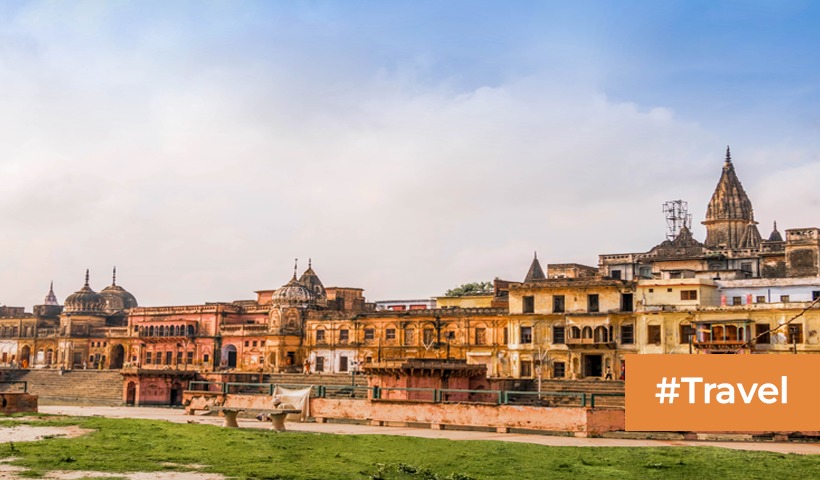Ayodhya Ram Mandir and Its Historic Inauguration
The inauguration of the Ayodhya Ram Mandir marks a significant moment in India’s cultural and religious landscape. Rooted in centuries of history, the grand temple is a manifestation of the collective faith and devotion of millions of Hindus. As the nation eagerly awaits this historic event, let’s delve into the rich tapestry of the Ayodhya Ram Mandir, exploring its historical significance, architectural marvels, and the spiritual journey that led to its construction.
Historical Significance of Ayodhya:
Ayodhya, situated on the banks of the Sarayu River in the northern Indian state of Uttar Pradesh, is steeped in mythology and history. According to Hindu belief, Ayodhya is the birthplace of Lord Ram, one of the incarnations of Lord Vishnu. The city finds mention in ancient texts like the Ramayana, which narrates the epic journey of Lord Ram and his consort Sita.
The Ayodhya Ram Mandir:
The Ayodhya Ram Mandir, dedicated to Lord Ram, has been a symbol of reverence and devotion for Hindus for centuries. The journey towards the construction of the temple, however, was fraught with legal battles and socio-political complexities. The turning point came in 2019 when the Supreme Court of India delivered a historic verdict, paving the way for the construction of the Ram Mandir at the disputed site.
Architectural Marvels:
The architectural design of the Ayodhya Ram Mandir reflects a harmonious blend of traditional and modern elements. The temple complex, spanning over an expansive area, features intricate carvings, majestic spires, and finely crafted sculptures. Skilled artisans and craftsmen from across the country have contributed to the construction, employing age-old techniques to ensure authenticity and adherence to the principles of temple architecture.
The Main Sanctum:
At the heart of the Ayodhya Ram Mandir lies the main sanctum, housing the idol of Lord Ram. The idol, intricately carved from a single block of stone, is a focal point for devotees. The Pran-Pratishtha ceremony, a sacred ritual conducted to consecrate the idol, infuses spiritual life into the deity, signifying the divine presence of Lord Ram in the temple.
Cultural and Religious Unity:
The construction of the Ayodhya Ram Mandir has been hailed as a unifying force, bringing together people from different walks of life and religious backgrounds. While the temple is of immense importance to Hindus, it also serves as a symbol of India’s cultural diversity and the coexistence of various faiths.
Spiritual Journey to Inauguration:
The journey from the legal dispute to the grand inauguration of the Ayodhya Ram Mandir has been marked by perseverance, faith, and a sense of national pride. Devotees from across the country and beyond have eagerly awaited this moment, viewing it as the fulfillment of a sacred dream and the restoration of a cultural heritage that spans millennia.
Ceremonial Inauguration:
The ceremonial inauguration of the Ayodhya Ram Mandir is a meticulously planned event that involves various rituals, prayers, and cultural performances. Dignitaries, religious leaders, and devotees from different parts of the country are expected to attend the grand ceremony. The presence of Prime Minister Narendra Modi underscores the government’s commitment to cultural preservation and religious harmony.
Tourist and Pilgrim Attractions:
Apart from its religious significance, the Ayodhya Ram Mandir is poised to become a major tourist and pilgrimage destination. The temple complex, with its sprawling architecture and serene surroundings, is expected to attract visitors from around the world. The Uttar Pradesh government has initiated plans for the development of infrastructure to accommodate the influx of pilgrims and tourists.
Challenges and Controversies:
While the construction of the Ayodhya Ram Mandir has received widespread support, it has not been without its share of challenges and controversies. Some critics argue that the government’s involvement in the religious domain raises questions about the separation of state and religion in a secular democracy. Additionally, concerns have been raised about the allocation of resources in a country grappling with various socio-economic issues.
Global Perspective:
Internationally, the inauguration of the Ayodhya Ram Mandir has garnered attention as a cultural and religious milestone. It provides an opportunity for India to showcase its rich heritage and traditions on the global stage. The inclusivity demonstrated in the construction process and the government’s approach to the Ayodhya issue also sends a message of religious tolerance and pluralism.
Conclusion:
The inauguration of the Ayodhya Ram Mandir is a momentous occasion that transcends religious and cultural boundaries. It symbolizes the resilience of a nation in navigating complex issues and the ability to find common ground amidst diversity. As the grand temple opens its doors to devotees and visitors, it heralds a new chapter in India’s cultural journey, emphasizing the importance of preserving heritage, fostering unity, and embracing the spiritual tapestry that binds the nation together.
Disclaimer: The views expressed above are for informational purposes only based on industry reports and related news stories. PropertyPistol does not guarantee the accuracy, completeness, or reliability of the information and shall not be held responsible for any action taken based on the published information.




